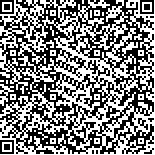| This article has been:Browse 1644Times Download 2942Times |

scan it! |
|
|
| DOI:10.13522/j.cnki.ggps.2019371 |
|
| Numerical Simulation of Spatiotemporal Variation in Exfiltration and Moisture Content in the Proximal Soil of Channel |
|
ZHANG Jian, WEI Zhanmin, ZHANG Jinding, YANG Xudong, SU Rina
|
|
1.College of Water Conservancy and Civil Engineering, Inner Mongolia Agricultural University, Hohhot 010018, China;2.Center of Water Conservancy News Propaganda of Inner Mongolia Municipality, Hohhot 010000, China
|
| Abstract: |
| 【Objective】Channel exfiltration is impacted by numerous factors and the objective of this paper is to study spatiotemporal variation in water content in the proximal soil of channel and its impact on channel exfiltration.【Method】Channel exfiltration was measured using constant water head method. We measured exfiltration rate and spatiotemporal variation in soil water content by setting the water head at eight different levels. Saturated-unsaturated water flow in the proximal soil of the channel was simulated using the Hydrus -2D software from which we calculated the exfiltrating rate at different part of the channel, and compared the impact of water depth in the channel and three soil textures: stratified soil as seen at the experiment site, homogenous sandy loam and loam soil.【Result】①The soil-interface in the stratified soil had a moderate effect on water infiltration, and it took more time for the underlaid layer to become saturated compared to the homogenous soil. Once breaking through the soil interface, the infiltration increased linearly with time. ②Comparison with experimental data revealed that the Hydrus-2D was able to simulate infiltration rate and cumulative infiltration into the soil. It is found that with the depth of water in the channel increasing, both infiltration rate and accumulative infiltration increased. Because water flow in soil is driven by potential energy gradient, the depth of the water in the channel was positively correlated with matric potential gradient in the soil and the channel exfiltration rate. ③The stickier and denser the soil was, the smaller the pores were, and, as a result, it reduced soil hydraulic conductivity and improved soil capacity.【Conclusion】The Hydrus-2D software was able to simulate water flow in the proximal soil of channel and the channel exfiltration under complicated conditions. The stratified soil could slow down water infiltration; increasing sticky and density of the soil can reduce water infiltration. The results of this study provide a means to evaluate the efficacy of irrigation channel improvement in alleviating channel exfiltration. |
| Key words: Hydrus-2D; layered Soil; channel leakage; soil moisture content; numerical simulation |
|
|